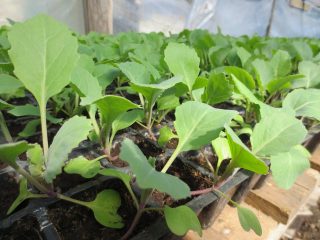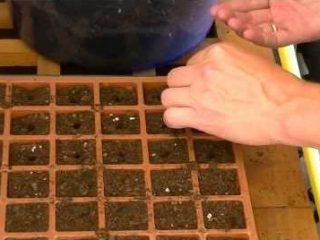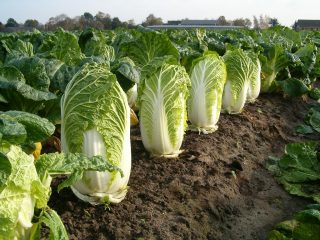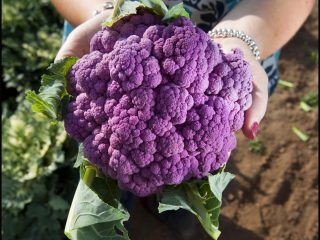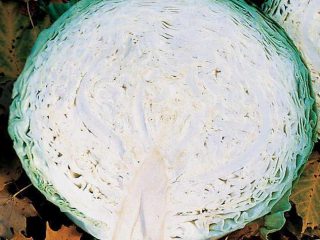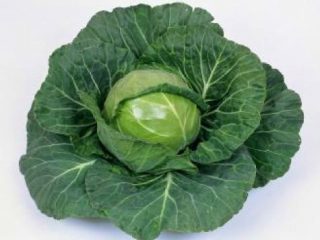Content
Kolya cabbage is a late white cabbage variety. It is a hybrid of Dutch origin. Popular with gardeners because it is very resistant to diseases and insect pests. Its heads are quite dense and do not crack during development. Suitable for pickling and preparing fresh salads.
Characteristics of Kolya cabbage
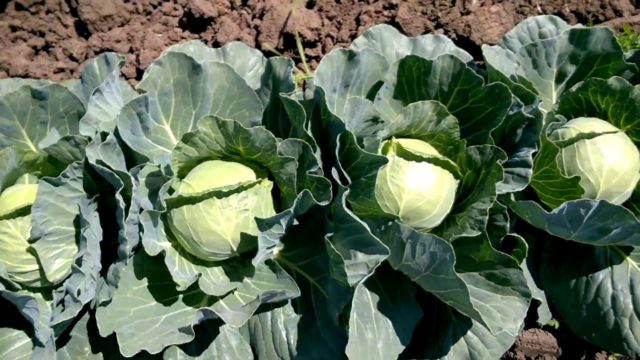
Kohl's hybrid is resistant to cracking
This hybrid of white cabbage was grown by Dutch breeders. Many farmers and gardeners appreciated all the qualities of the Kohl hybrid. Cabbage appeared in Russia in 2010. Almost immediately it was found that it is resistant to unexpected weather changes, insect pests and many diseases. This cabbage does not require greenhouse conditions.
Description of cabbage Kolya F1: characterized by a rather high stalk (up to 10 cm). Ripe cabbage reaches 23 cm in diameter, and its weight can range from 3 to 8 kg. The leaf blades are not particularly wide. Their edges are slightly wavy and covered with a light coating. The upper surface of the fruit is green with a bluish tint, the inside is white-yellow. Refers to late-ripening crops. The fruits have a solid structure, the leaves adhere well to each other.
Advantages and disadvantages
Gardeners consider the main advantage of Kolya cabbage to be resistance to cracking, but this hybrid has a number of other advantages. The most important advantages include:
- the culture is very resistant to fungal infections;
- the most common cultivation conditions lead to good yields;
- its taste properties make it possible to use cabbage raw for making salads;
- quick adaptation to weather conditions;
- the crop can be harvested using mechanisms;
- when assessing the shelf life, it was found that cabbage can last up to 10 months;
- During long-term transportation, cabbage does not lose its appearance.
Gardeners also noted some disadvantages of the Kohl hybrid. For example, difficulties when growing from seeds and frequent breakage of the stalk due to insufficient soil hilling.
Productivity of white cabbage Kolya
The productivity of the Kohl hybrid is 7-9 kg of cabbage per square. When grown on an industrial scale, about 380-500 centners of forks are collected per hectare.
Planting and caring for Kolya cabbage
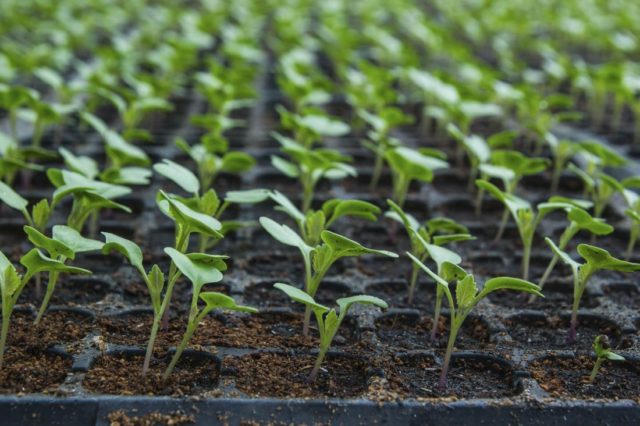
When growing seedlings, you need to take care of sufficient lighting of the seedlings
Seeds for seedlings begin to be sown in March-April. It should be noted that seedlings appear on 8-10 days. Planting in the ground is carried out after 50 days. The soil must be prepared in advance - treated with a solution of potassium permanganate. The planting material itself is also disinfected - soaked for 10-15 minutes in a saturated solution of potassium permanganate. After this, the seeds need to be washed and dried.
When the sprouts form the first few leaves, the seedlings are planted and fertilized.Two weeks before the intended planting, seedlings need to begin to be hardened off. The containers with cabbage are first taken out into fresh air for a couple of hours, then the time is increased. For the last 2-3 days, the sprouts do not need to be removed indoors at all.
In the southern regions, it is possible to grow Kolya cabbage without separately planting seedlings. Seeds are sown immediately in open ground, deepening them by 2 cm. With this method, the first shoots should appear on days 5-7.
On the 50th day before planting the seedlings, each sprout should have 5-6 leaves. First, they should be watered generously. The beds are formed at a distance of 50 cm from each other. Fertilizer must be added to the holes. The seedlings are removed and deepened into the soil up to the first leaf. Next, the holes should be watered with water and filled with soil as they are absorbed. It must be mulched to prevent the evaporation of liquid.
Basic care
Watering should be done every 4-6 days, unless there is a drought. The first loosening is carried out 10 days after planting in the ground, and then it is advisable to carry it out after each watering or rain. This will avoid the formation of a dense crust and provide oxygen access to the root system. Hilling of Kolya cabbage is carried out 18-21 days after planting, and then 2 weeks later. This is necessary so that the cabbage does not fall on its side, since the variety has a long stalk. During the period of growth and development, fertilizers should be applied about 4 times.
Diseases and pests
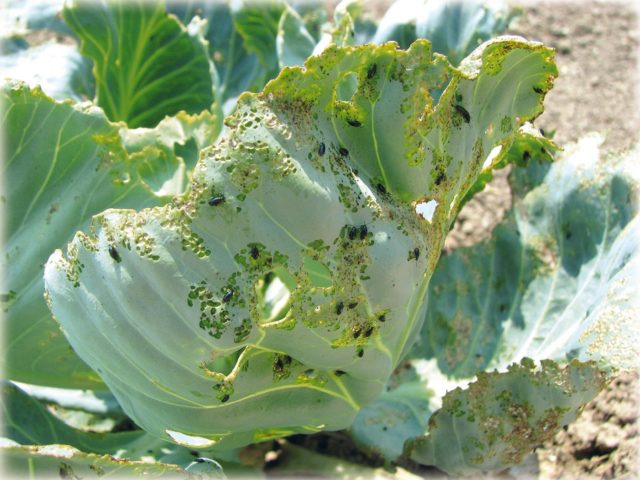
It is very difficult for a crop to recover after an attack by leaf-eating insects
Kolya cabbage perfectly resists diseases and attacks from insect pests, but with proper care. The variety may be susceptible to the following diseases:
- blackleg;
- white rot;
- kila.
Experienced gardeners do not recommend pre-treating crops against these diseases. The cabbage immune system must cope with them on its own. If the plant has been damaged, then the leaves and heads of cabbage must be destroyed, and the rest, which have not yet become ill, must be treated with special means.
Among the pests you need to be wary of are the cabbage fly, which is especially active in early summer, and leaf-eating insects. You should know that spraying can only be done before tying the forks.
Leaf-eating insects include: cabbage aphids, white aphids, moths, cutworms, and bugs. These pests can be controlled with a solution of technical chlorophos and phosphomide.
Application
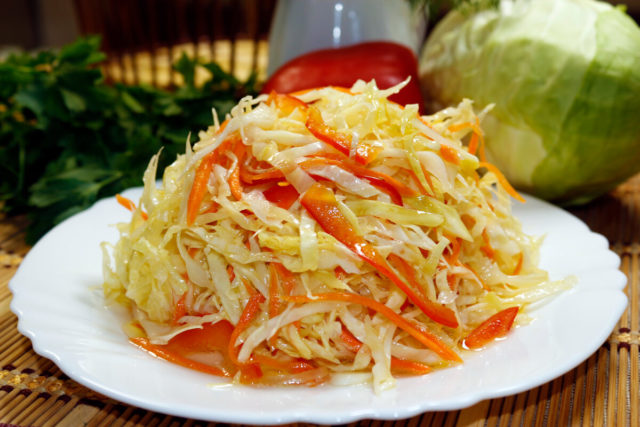
The culture is not bitter and is suitable for preparing fresh salads
The Kolya cabbage tolerates heat treatment well without losing its taste. Since the culture is not bitter, it can be used raw for making salads. But it is good both stewed and fried. Ideal for canning, pickling, pickling. Since Kolya cabbage is resistant to cracking, it can be stored for a very long time.
Conclusion
Kohl's cabbage is a hybrid crop. Gained popularity in Russia due to its resistance to pests and diseases.In addition, the main distinguishing feature of the variety is the absence of cracks during the development and growth of the crop. It is easy to care for and has a pleasant taste.
Reviews of Kolya cabbage
